Membranes must be...what? (3)
1. Flexible
2. Self-sealing
3. Selectively permeable
Why are biological membranes bilayers? (4)

• Biological membranes are composed largely of lipids and proteins
• The lipids are amphipathic, meaning they have a hydrophilic and hydrophobic part
• Assemble spontaneously
• Non-covalent assemblies
Picture outlining the various Lipid compositions:
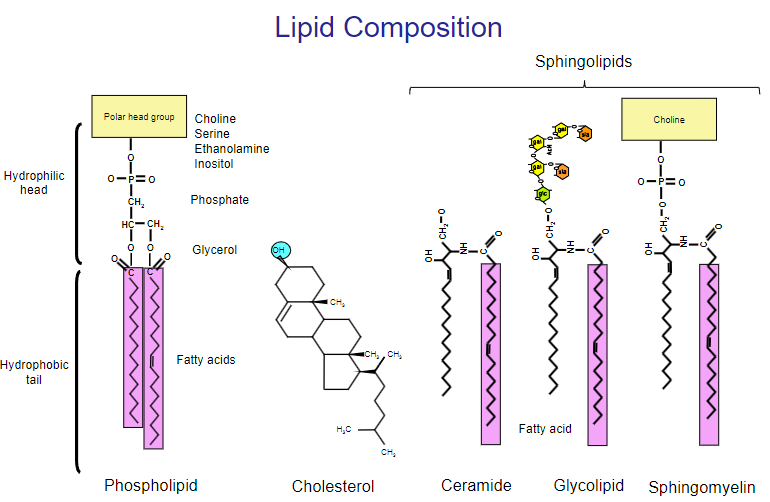
Picture outlining how the contents of the membrane are asymmetrical:
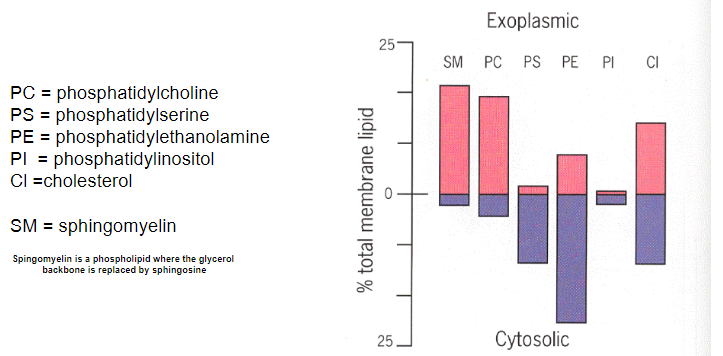
Membranes Synthesis Lipids, How? (7)
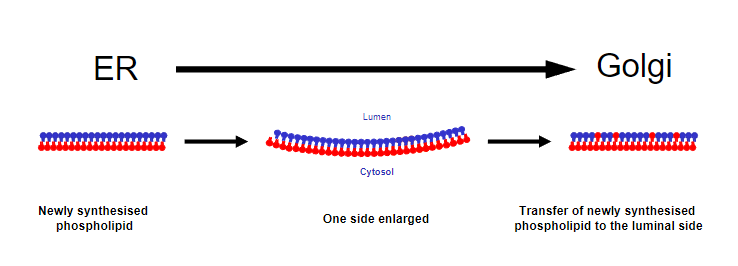
Enzymatic Processes:
Enzymes in the endoplasmic reticulum (ER) facilitate lipid synthesis.
Phospholipid Backbone Formation:
Glycerol forms the backbone for phospholipids.
Acyl Chain Addition:
Fatty acid chains are added to form phospholipids.
Sphingolipid Synthesis:
ER and Golgi apparatus synthesize sphingolipids.
Sterol Synthesis:
ER synthesizes sterols (steroid-based alcohol) like cholesterol.
Transport to Membranes:
Newly synthesized lipids are transported to membranes.
Membrane Assembly:
Lipids integrate into membranes, forming bilayers.
What does Floppase do?
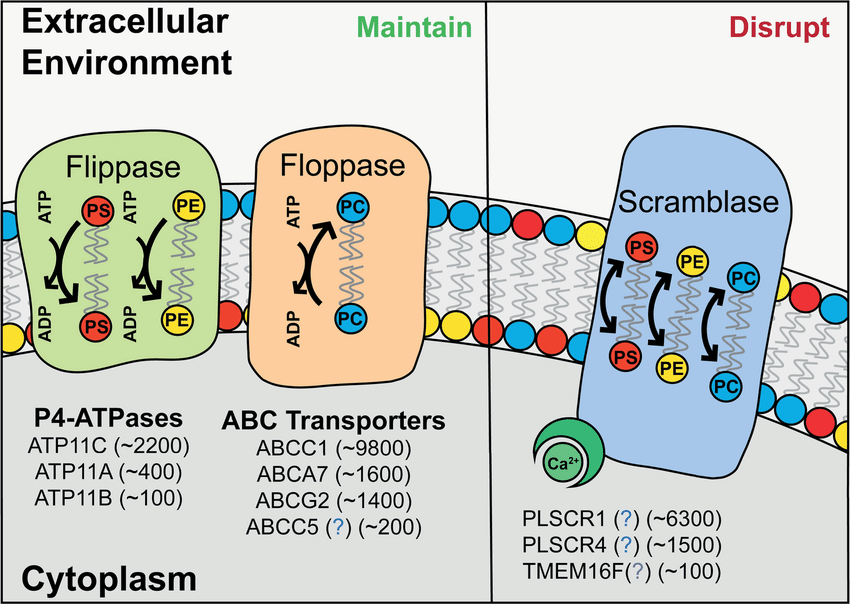
-Moves phospholipids from the inner to the outer leaflet
-Requires ATP
What does Flippase (flipase) do?
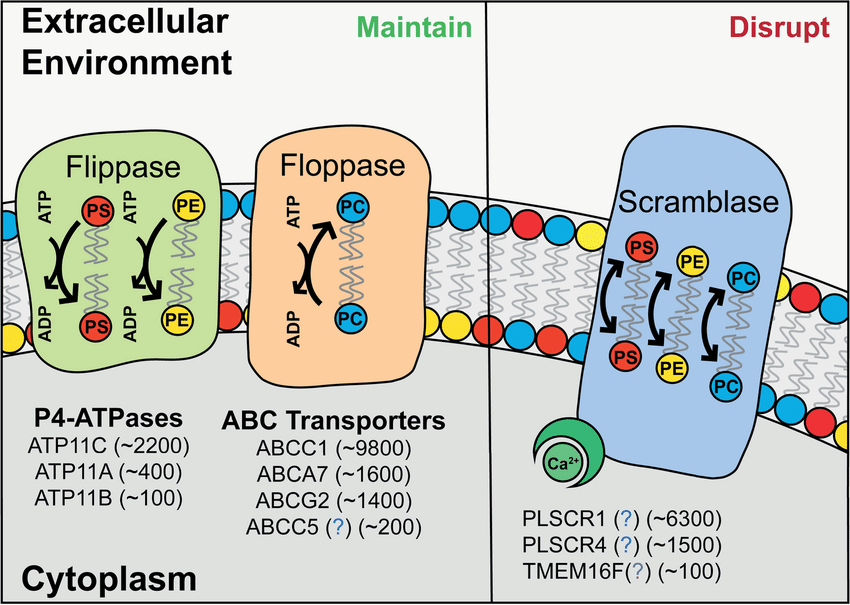
-Moves phospholipids from the outer to the inner leaflet
-Requires ATP
What does Scramblase do?
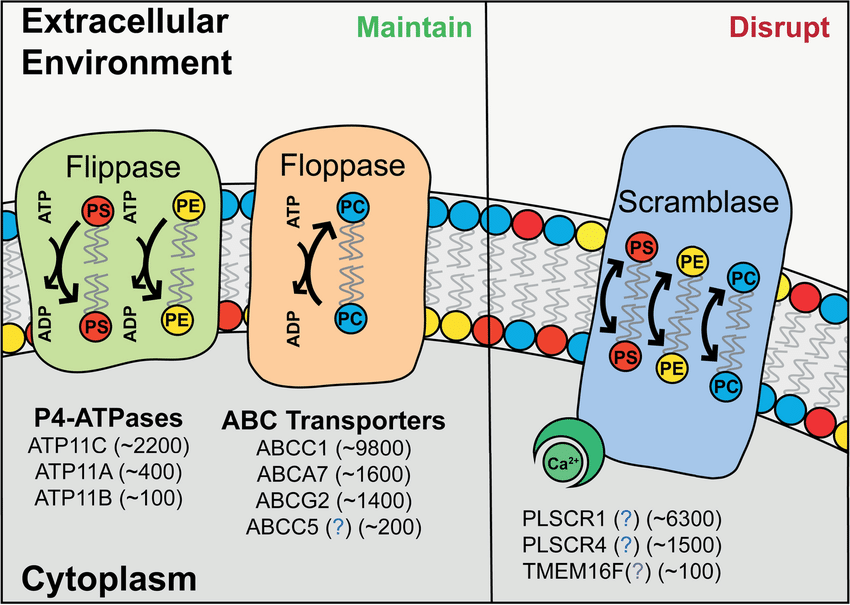
Scramblase – bidirectional movement
Phospholipid synthesis takes place where?
On the cytosolic surface of the endoplasmic reticulum
Describe the Lateral movement of lipids in the membrane:
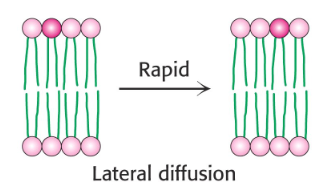
-Rapid
Describe the Transverse movement of lipids in the membrane:
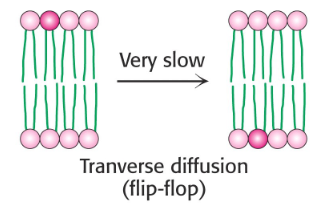
-Slow
-Requires the action of 3 enzymes
What 5 factors alter fluidity?
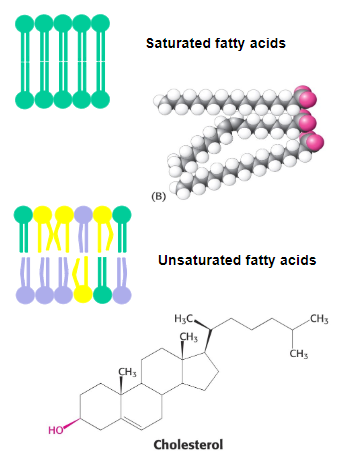
• Temperature
• Fatty acid composition
• Chain length
• Degree and extent of saturation
•Cholesterol content
How does cholesterol act in cold temperatures:
-Inserts itself among phospholipids, reducing close packing
-Inhibits the formation of ice-like crystals in the membrane.
How does cholesterol act in Hot temperatures:
-Interferes with phospholipid movement and rotation.
-Provides structural support to the membrane, preventing excessive deformation and permeability
What is Spur Cell Anaemia? Why is it associated with lipid metabolism?
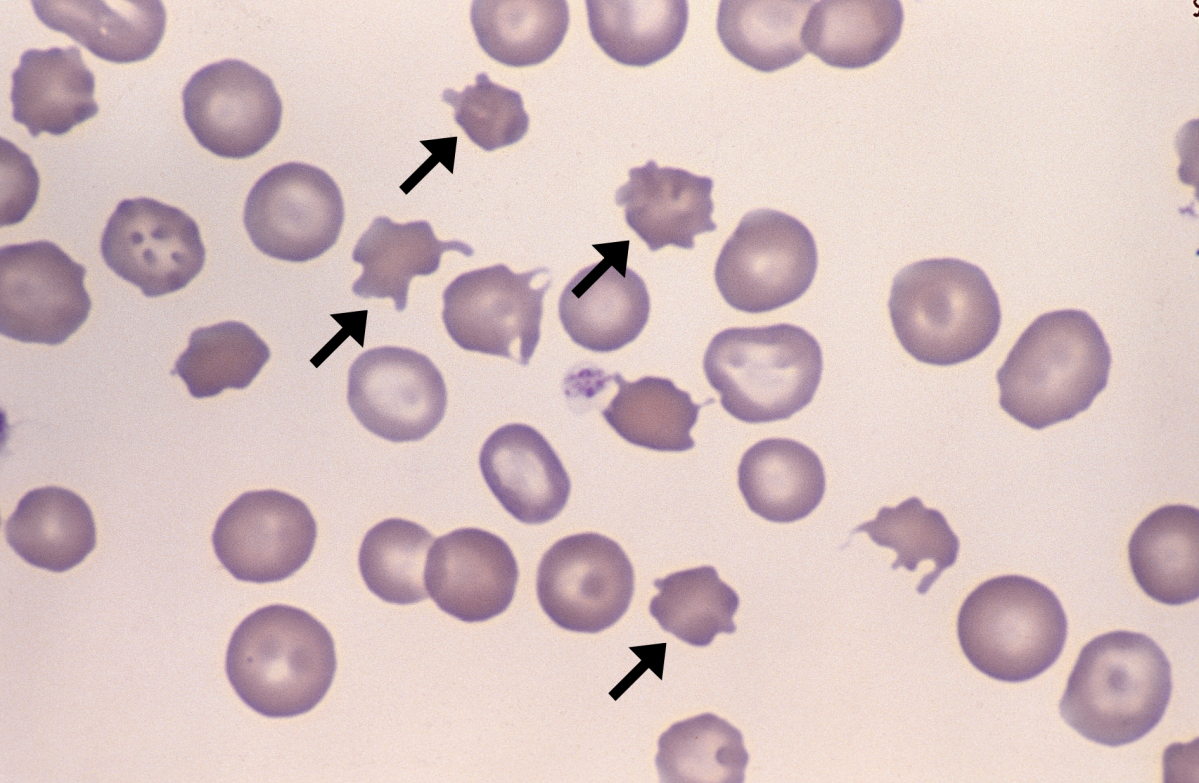
Spur Cell Anaemia:
Characterized by spur cells (acanthocytes) in the blood.
Irregularly shaped cells with spikelike projections.
Association with Lipid Metabolism:
Often linked to disorders affecting lipid metabolism.
Abnormalities in cholesterol and lipoprotein metabolism.
In Spur Cell Anaemia, Cholesterol content increased by 25-65%; This leads to what?
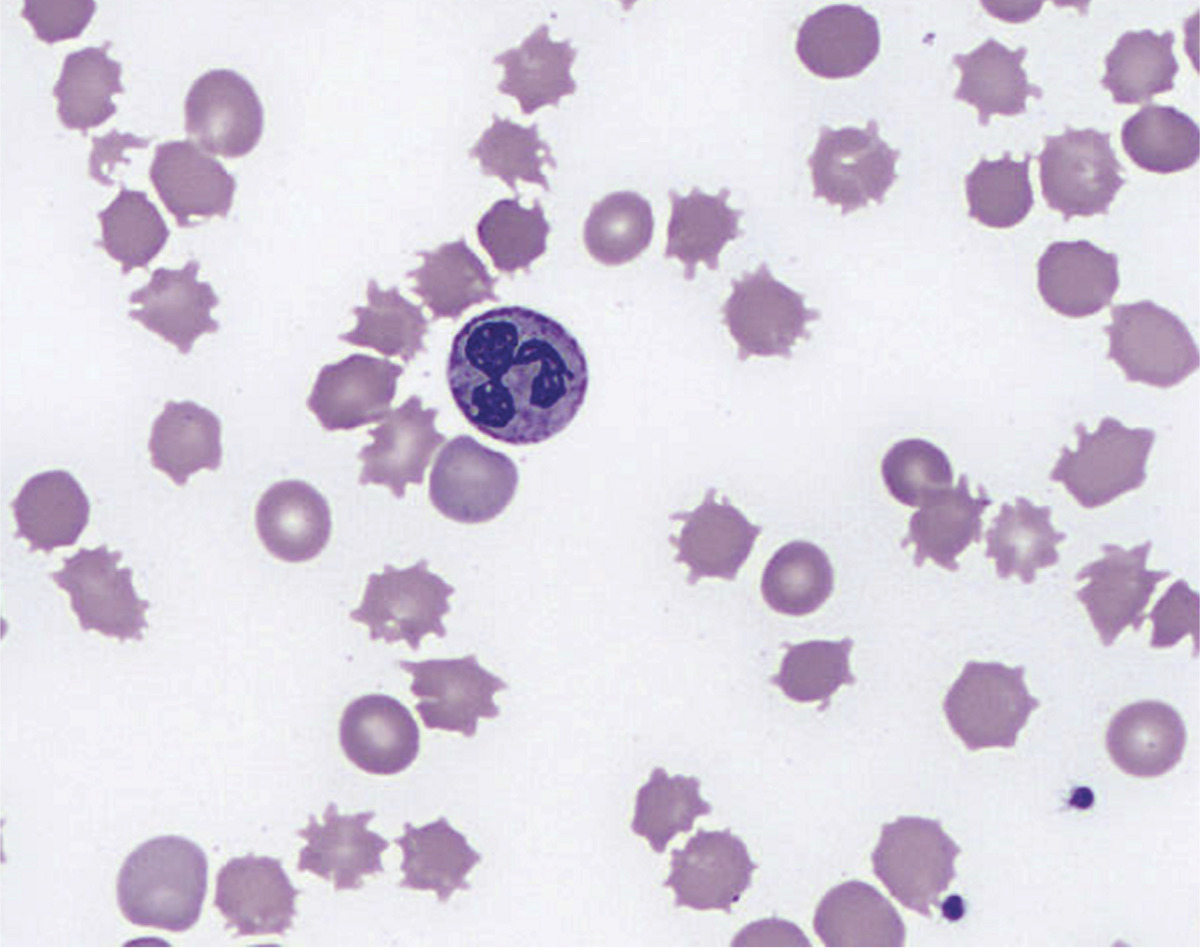
Leading to decreased membrane fluidity
Integral membrane proteins can....?(3)
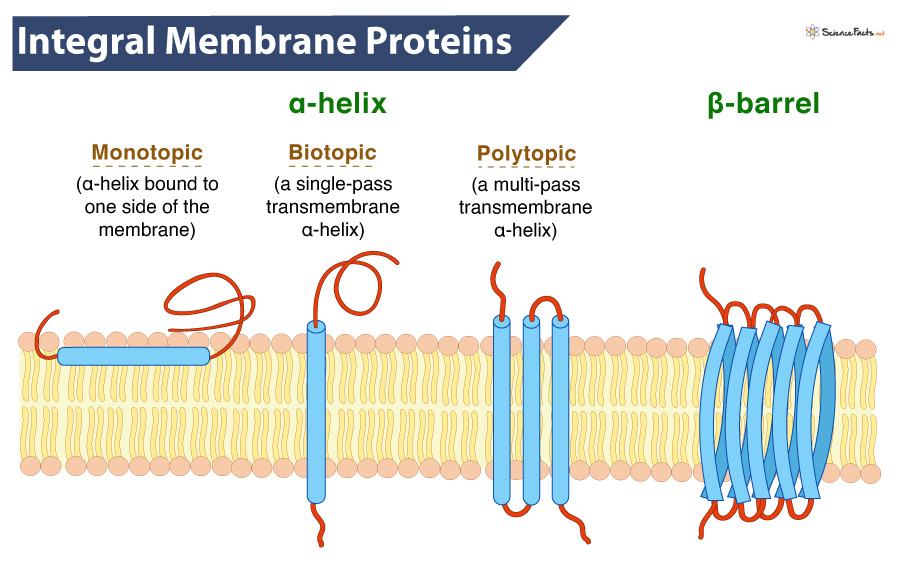
• Be Single or multi pass
• Have Strong non-covalent bonds
• Have Trans-membrane domains, often an a-helix
Where are peripheral membrane proteins located? What bonds do they associate with?
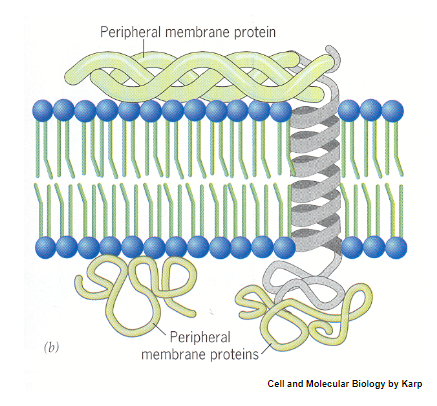
• Located on both the extracellular and cytosolic regions of the membrane
• Associated by non-covalent bonds
What are Lipid anchored membrane proteins linked to?
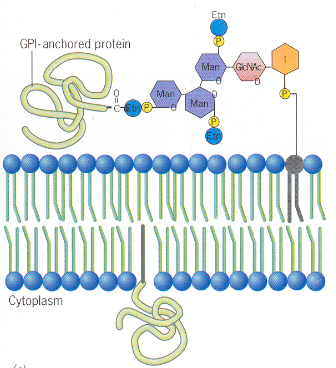
•Covalently linked to a lipid molecule such as glycosyl-phosphatidylinositol (GPI)